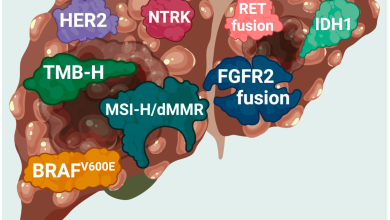Why Are Cancer Cases Increasing? Insights for a Healthier Future

Cancer has become an increasingly prevalent health issue globally, and Canada is no exception. The rising number of cancer cases is a significant concern, prompting discussions about prevention, early detection, and efficient treatment methods. This article explores the factors contributing to the surge in cancer diagnoses, emphasizing the role of timely intervention and the potential benefits of using an online MRI report system to mitigate delays in cancer treatment.
The Rising Tide of Cancer Diagnoses
Aging Population
One of the primary reasons for the increase in cancer cases is the aging population. As life expectancy improves, the likelihood of developing age-related diseases, including cancer, rises. In Canada, the baby boomer generation is aging, leading to a higher number of elderly individuals at risk for cancer. Age is a significant risk factor for many types of cancer, such as prostate, breast, and colorectal cancer.
Lifestyle and Environmental Factors
Modern lifestyles and environmental factors also play a crucial role in the increasing cancer rates. Sedentary lifestyles, poor dietary habits, smoking, and alcohol consumption contribute significantly to cancer risk. Additionally, exposure to environmental carcinogens, such as air pollution, industrial chemicals, and UV radiation, has increased over the years, further elevating cancer risk.
Improved Detection and Awareness
While the rising number of cancer cases is alarming, it is also partially due to advancements in medical technology and greater public awareness. Improved screening techniques, such as mammography and colonoscopy, and advanced imaging methods, like MRI and CT scans, have made detecting cancer earlier and more accurately possible. Increased awareness has also led more people to seek medical advice when symptoms arise, contributing to higher reported cases.
The Critical Issue of Delayed Diagnosis
Slow Speed of Treatment
Despite advances in detection, one of the critical issues in cancer care is the slow speed of treatment. Delayed diagnosis remains a significant hurdle in effectively managing cancer. Several factors contribute to these delays, including long wait times for specialist appointments, diagnostic imaging, and treatment initiation. This delay can lead to cancer being diagnosed at a more advanced stage, making treatment less effective and reducing survival rates.
Impact of Delayed Diagnosis
When cancer is diagnosed late, patients often face limited treatment options and lower chances of recovery. Advanced-stage cancers are harder to treat and require more aggressive interventions, which can be physically and emotionally taxing for patients. Moreover, the cost of treatment escalates with disease progression, placing a financial burden on patients and healthcare systems alike.
Leveraging Technology: The Role of Online MRI Reports
Speeding Up Diagnosis
One innovative solution to mitigate the issue of delayed diagnosis is the use of online MRI report systems. These systems allow patients to receive their diagnostic imaging results quickly and efficiently. Online platforms can significantly speed up the diagnostic process by eliminating the need for physical visits to radiology centers and reducing the time spent waiting for results.
Enhancing Accessibility
Online MRI report systems also enhance accessibility to specialist consultations. Patients, regardless of their location, can have their MRI or CT scans interpreted by expert radiologists online. This is particularly beneficial for individuals in remote or underserved areas with limited access to specialized healthcare services. Faster access to imaging results enables timely decision-making and the initiation of treatment, potentially improving patient outcomes.
Supporting Early Detection
Early detection is critical in improving cancer survival rates. Patients can benefit from early intervention when treatment is most effective by facilitating quicker diagnosis through online systems. This approach aligns with the broader goal of reducing cancer-related mortality and improving patients’ quality of life.
Addressing Concerns and Moving Forward
Integrating Technology into Healthcare
While adopting online MRI report systems presents numerous advantages, concerns related to data security, patient privacy, and the need for seamless integration with existing healthcare infrastructure must be addressed. Ensuring these systems are user-friendly, secure, and reliable will be key to their success.
Encouraging Preventive Measures
Alongside technological advancements, public health initiatives should continue emphasizing cancer prevention through lifestyle changes, regular screenings, and vaccinations, such as the HPV vaccine. Education and awareness campaigns can empower individuals to take proactive steps in reducing their cancer risk.
Conclusion: A Path Toward a Healthier Future
The rising number of cancer cases in Canada underscores the urgent need for a multifaceted approach to cancer care. While aging populations and lifestyle factors contribute to the surge, delayed diagnosis remains a critical challenge. We can significantly improve early detection and treatment outcomes by adopting technologies like online MRI report systems and implementing systemic healthcare reforms. Coupled with preventive measures and increased awareness, these innovations can pave the way for a future where cancer is detected earlier and treated more effectively, ultimately enhancing survival rates and patient quality of life.
Through collaborative efforts spanning technology, healthcare policy, and public health initiatives, we can create a future where cancer care is faster, more accessible, and more effective. By addressing the root causes and leveraging innovation, Canada can lead the way in reducing the impact of cancer and ensuring a healthier future for all



